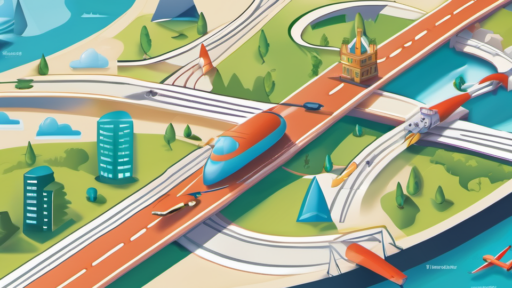Buckle Up, The Future of Transportation is Changing! 🤯
Forget flying cars, we’re talking about something way more impactful – a complete overhaul of how transportation is regulated. You know those clunky old rules about taxis and buses? Well, get ready for a massive disruption. Ride-hailing services like Uber and Lyft are just the tip of the iceberg, and new technologies are shaking things up faster than you can say “autonomous vehicles.”
Think about it. You’re about to step into a world where self-driving cars will rule the roads, drone delivery will be the norm, and even air taxis might whisk you away for a commute. Exciting? Scary? It’s both!
The fact is, the way we move is on the verge of a transformation, and regulators have their hands full trying to keep up.
Regulating a Shifting Landscape: 🚦
It’s easy to get lost in the hypothetical scenarios, but the reality is already here.
Imagine: You’re calling an autonomous vehicle to take you to work. Who’s responsible if something goes wrong? Who sets the rules of the road for automated cars? How do we make sure these vehicles are safe for everyone?
These are not questions that can be ignored. Governments are already scrambling to build regulatory frameworks for the future of transportation. We’re not talking about simple licenses anymore, we’re talking about complex policies covering everything from cybersecurity to insurance.
The biggest challenges come from the rise of ride-hailing and the promise of autonomous driving. Let’s dive deeper into each:
The Ride-Sharing Revolution: 🚘
This industry exploded on the scene with the promise of convenience and affordable transportation. Ride-sharing apps made getting a ride so much easier, and it wasn’t just a game-changer for consumers; it completely disrupted the traditional taxi industry.
But this disruptive force came with new sets of problems:
- Driver background checks: How do you ensure everyone is safe on the road? Who’s responsible for background checks and who’s held liable if a driver causes an accident?
- Worker classification: Are ride-sharing drivers employees or independent contractors? This has serious implications for labor rights and everything from minimum wage requirements to health insurance benefits.
- Insurance coverage: Who’s responsible for accidents when someone’s not in a traditional cab? There’s a whole new realm of coverage that needs to be addressed for ride-sharing companies and passengers alike.
Governments across the globe are now ** grappling with these challenges**. Some have *imposed specific requirements* on ride-sharing companies, like mandatory background checks and vehicle inspections, while others are exploring innovative solutions, like regulatory sandboxes that allow testing new approaches before fully implementing them.
Autonomous Vehicles – The Big Question: 🤖
Remember when you dreamt of a car that drives itself? That dream is getting closer to reality every day. Self-driving vehicles hold immense potential, from reducing traffic congestion and accidents to providing mobility options for people who can’t drive.
However, they’re also raising major regulatory hurdles:
- Liability: If a self-driving car is involved in an accident, who’s liable? Is it the car’s manufacturer, the software developer, or the passenger themselves?
- Data privacy: Autonomous vehicles gather massive amounts of data about your driving habits, location, and other personal information. How do we ensure this data is protected from misuse?
- Safety regulations: Who sets the rules of the road for automated vehicles? Safety standards need to be carefully considered to prevent accidents and protect passengers.
- Public acceptance: Do you trust a car to drive you safely with no human at the wheel? There’s the whole issue of public trust and acceptance that needs to be tackled before these vehicles become mainstream.
The legal and regulatory frameworks surrounding autonomous vehicles are still evolving. The need for a clear path forward is urgent, and lawmakers are trying to stay ahead of the technological curve in a rapidly evolving environment.
Key Takeaways:
- The transportation industry is experiencing a transformative period driven by technology.
- Regulatory frameworks need to evolve to accommodate new business models, technology, and safety concerns.
- Ride-hailing services and autonomous vehicles pose unique challenges that require creative solutions.
- The success of the future of transportation hinges on collaboration between government, industry, and the public.
- This is just the beginning. Buckle up and get ready for a bumpy, but fascinating, ride!
Keep an eye on this space because the future of transportation is happening right now.






